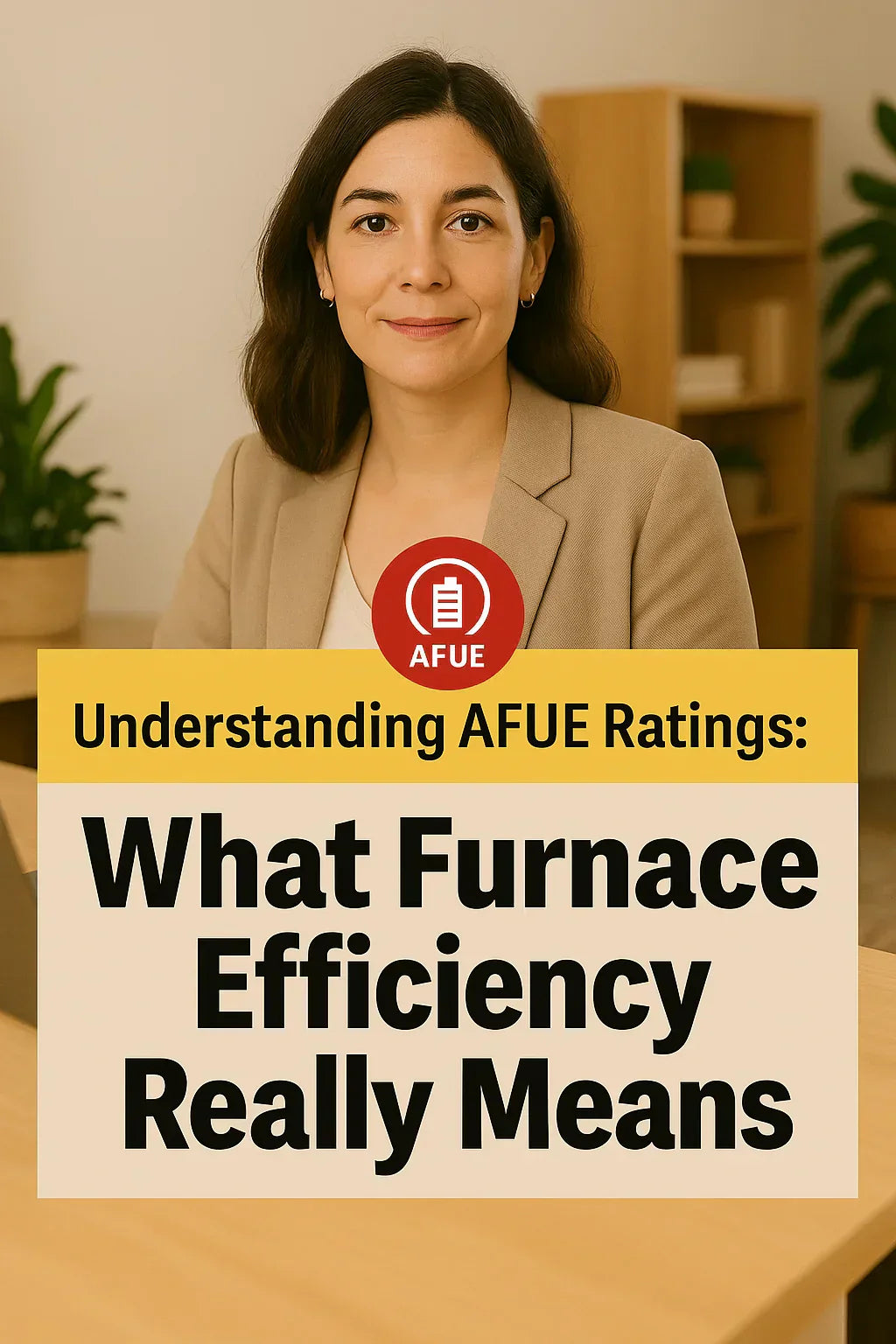🏠 Introduction: Decoding Furnace Efficiency
When shopping for a new furnace, you'll quickly encounter a term that can feel a bit mysterious: AFUE. But what is AFUE? And why should it influence your buying decision?
In this Savvy Mavi guide, we'll break down:
-
What AFUE means
-
How it's calculated
-
Why it matters for your wallet and the environment
-
The difference between standard and high-efficiency models
-
How to choose the right efficiency level for your home
📊 What is AFUE?
AFUE stands for Annual Fuel Utilization Efficiency. It's the standard measurement of how efficiently a furnace converts fuel into heat over the course of a year.
Formula:
AFUE (%) = (Useful heat output / Total fuel input) x 100
For example, a furnace with 90% AFUE converts 90% of the fuel into usable heat, while 10% is lost, typically through exhaust.
The U.S. Department of Energy mandates that all new furnaces display their AFUE ratings for easy comparison.
🔍 AFUE Rating Breakdown
| AFUE Rating | Efficiency Class | Typical Model |
|---|---|---|
| 56% - 70% | Very low (obsolete) | 1970s models |
| 80% | Standard efficiency | Basic models |
| 90% - 95% | High efficiency | Condensing furnaces |
| 96% - 98.5% | Ultra-high efficiency | Top-tier models |
Key Takeaway: Higher AFUE = more heat for every dollar you spend on fuel.
💸 How AFUE Affects Your Energy Bills
Even small improvements in AFUE can translate to significant savings over time:
-
Moving from 80% to 95% AFUE could reduce heating costs by 15-20%.
-
In colder climates with long heating seasons, these savings multiply.
Use online calculators like this one from Energy Star to estimate your potential savings.
🔬 How High-Efficiency Furnaces Work
High-efficiency models typically employ condensing technology:
-
Capture and reuse heat from exhaust gases.
-
Use a secondary heat exchanger to extract additional heat.
-
Require special venting systems (PVC pipes).
Older furnaces simply vent hot exhaust, wasting energy. Condensing models squeeze every BTU they can from the combustion process.
Learn more about condensing furnaces at HVAC.com.
🌎 Environmental Benefits
Higher AFUE not only saves money but also reduces your carbon footprint:
-
Less fuel burned means fewer greenhouse gas emissions.
-
Helps comply with increasingly strict local and national environmental standards.
-
Many high-efficiency models qualify for federal tax credits and utility rebates.
The EPA’s Energy Star Rebates Finder can help you locate available incentives.
🧮 Is High AFUE Always Worth It?
While high AFUE is attractive, it's not always the best financial decision for everyone. Factors to consider:
-
Upfront cost: High-efficiency units can cost $1,000 - $3,000 more.
-
Climate: The colder your climate, the quicker you recoup that premium.
-
Fuel prices: Cheaper fuel means longer payback periods.
-
Length of ownership: If you plan to move soon, you may not realize full savings.
🛑 Common Misconceptions
-
"Electric furnaces are 100% efficient, so they're always better."
-
True at point-of-use, but not when factoring in generation and transmission losses.
-
-
"High-efficiency models are maintenance-free."
-
They require regular servicing to maintain performance.
-
-
"An 80% furnace is 'bad.'"
-
In mild climates with low fuel costs, 80% units may still be cost-effective.
-
🏅 The Savvy Mavi Bottom Line
-
AFUE is a critical number for furnace buyers.
-
High AFUE models reduce fuel use and emissions but come at a higher upfront cost.
-
Carefully weigh your climate, utility rates, and long-term plans.
-
Don’t forget to factor in available rebates and incentives.
Ultimately, AFUE is a tool—use it wisely to make an informed, financially smart, and environmentally friendly decision.
In the next topic we will know more about: What Size Furnace Do I Need? A Homeowner’s Guide to Furnace Sizing







